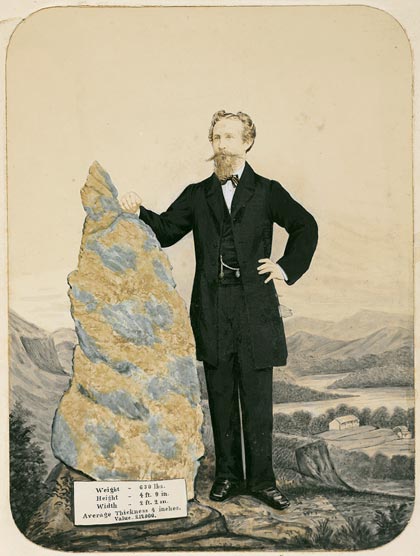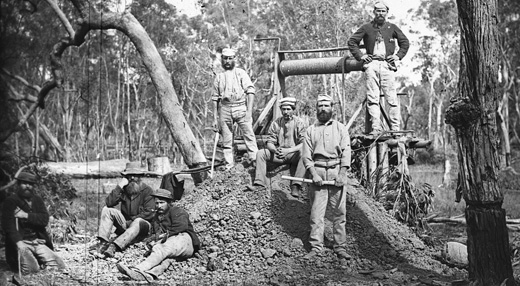Eureka! The rush for gold
The gold rushes and the diggers who worked the goldfields are etched into Australian folklore. Follow the story of the people who sought the glittering prize.
Edward Hammond Hargraves is credited with finding the first payable goldfields at Ophir, near Bathurst, New South Wales, on 12 February 1851. News of gold spread quickly around the world and in 1852 alone, 370,000 immigrants arrived in Australia. By 1871, the national population had trebled to 1.7 million.
The Australian gold rushes transformed former convict colonies into modern cities with an influx of free emigrants in the latter half of the nineteenth century. Hundreds of thousands of hopeful diggers arrived in the eastern ports bringing new skills and professions which contributed to a booming economy.
While not all these diggers found riches on the goldfields, many chose to stay in the colonies and established themselves in the newly-prosperous cities.
 B.O. Holtermann with gold nugget, ca. 1873, by Charles Bayliss
B.O. Holtermann with gold nugget, ca. 1873, by Charles BaylissHandcoloured albumen print, PXD 762, No. 9
The camaraderie and 'mateship' that developed between diggers on the goldfields is still integral to how we perceive ourselves as Australians. The diggers' defiance and open disdain of authority, including the events of the Eureka Stockade, contributed to the formation of a uniquely Australian national identity.
Small gold minehead without shelter and six miners, Gulgong, ca. 1875, by AACP
Wet plate negative ON 4 Box 43/18
Navigate through the story of the Gold Rush via the left menu and delve deeper into the Library's collection via links to the Library's catalogues and further resources in the Discover More feature.
Eureka! The rush for gold is made possible through a partnership with St Barbara Limited.



